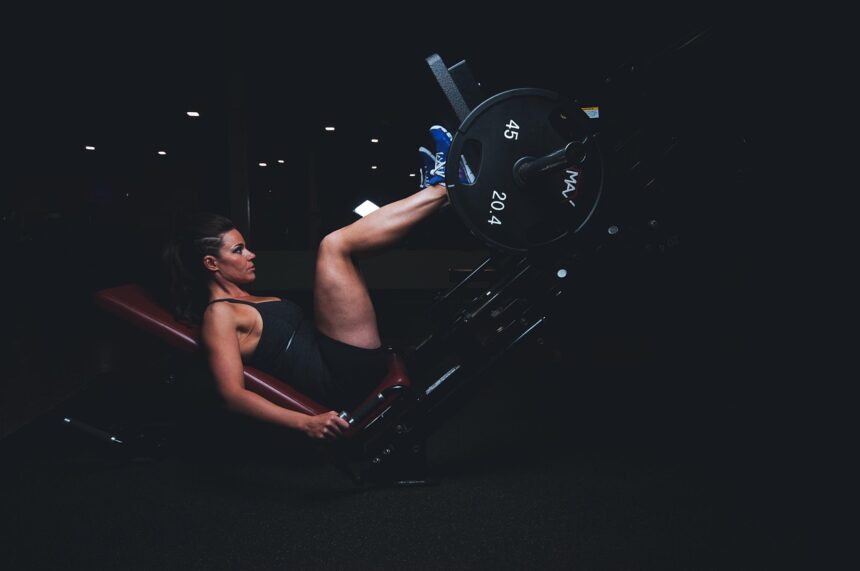Have you ever wondered why some people seem to get incredible results from their workouts while others struggle to see progress despite putting in the hours at the gym? The secret often lies in something that sounds almost mystical but is actually quite practical: the mind-muscle connection.
Think of it this way – your brain is like the conductor of an orchestra, and your muscles are the musicians. When the conductor and musicians are perfectly in sync, you get a beautiful symphony. When they’re not communicating well, things sound off. The same principle applies to your workouts.
What Exactly Is Mind-Muscle Connection?
Simply put, mind-muscle connection is your ability to consciously focus on and feel the specific muscle you’re trying to work during an exercise. It’s about being mentally present during your reps, rather than just going through the motions.
When you have a strong mind-muscle connection, you can actually feel your bicep contracting during a curl, or your glutes firing during a squat. It’s not just about moving weight from point A to point B – it’s about intentionally engaging the right muscles to do the work.
Research backs this up too. Studies have shown that people who focus on the muscle they’re working can increase muscle activation by up to 60%. That’s a huge difference that can translate to better gains over time.
Why Most People Miss Out on This Game-Changer
Here’s the thing – most of us have never been taught how to actually connect with our muscles. We learn exercises by watching others or following along with videos, focusing mainly on form and technique. While those things matter, we often forget about the mental side of training.
Add to that our modern lifestyle of sitting at desks all day, and many of us have what fitness professionals call “dormant” muscles. Take your glutes, for example. If you sit for eight hours a day, your brain kind of forgets how to properly activate those muscles when you need them during squats or deadlifts.
Practical Steps to Strengthen Your Mind-Muscle Connection
Start With Bodyweight and Light Weights
Before you load up the bar with heavy plates, take a step back. Begin with bodyweight exercises or very light weights. This isn’t about your ego – it’s about education. When you’re not struggling with heavy weight, you can actually pay attention to what’s happening in your body.
Try doing push-ups and really focus on feeling your chest muscles stretch and contract with each rep. Or do air squats while concentrating on your glutes and quads doing the work. This foundation will pay dividends when you add more weight later.
Slow Down Your Reps
Speed kills connection. When you’re racing through your reps, there’s no time to actually feel what’s happening. Try slowing down your repetitions, especially during the lowering (eccentric) portion of the movement.
For example, when doing a bicep curl, take 3-4 seconds to lower the weight back down. This extended time under tension not only builds strength but gives your brain more opportunity to register what’s happening in that muscle.
Use Visualization Techniques
Before you even pick up a weight, spend a moment visualizing the exercise. Picture the muscle you want to work and imagine it contracting and lengthening. This mental rehearsal actually helps prime your nervous system for better muscle activation.
Some people find it helpful to place their hand on the muscle they’re about to work. If you’re doing lateral raises for your shoulders, touch your deltoids first and give them a gentle squeeze. It’s like saying “hello” to your muscles before asking them to work.
Try Pre-Activation Exercises
These are light, high-repetition movements designed to “wake up” your muscles before the main exercise. If you’re planning to do squats, start with some clamshells or glute bridges to get those glutes firing. For chest work, try some band pull-aparts to activate your rear delts and prepare your shoulders.
Pre-activation doesn’t need to be complicated or time-consuming. Even 10-15 reps of a simple movement can make a noticeable difference in how well you can connect with your muscles during your main exercises.
Focus on One Muscle Group at a Time
When you’re first developing your mind-muscle connection, don’t try to think about everything at once. If you’re doing a squat, maybe focus just on your glutes for one set, then shift your attention to your quads for the next set.
This targeted focus helps you learn what each muscle feels like when it’s working properly. Over time, you’ll be able to coordinate multiple muscle groups while maintaining that connection.
Common Mistakes That Kill Your Connection
Going Too Heavy Too Soon
Your ego wants to lift heavy weights, but heavy weights often force you to use whatever muscles are strongest to complete the movement. This usually means the muscles you’re trying to target get overshadowed by the ones that are already dominant.
There’s nothing wrong with lifting heavy, but make sure you’ve established a good mind-muscle connection with lighter weights first. Think of it as building the software before upgrading the hardware.
Rushing Through Workouts
We’re all busy, but rushing through your workout is like speed-reading a book – you might get through it faster, but you’re missing most of the important details. Quality trumps quantity when it comes to building that mind-muscle connection.
Getting Distracted
Your phone, the TV screens, conversations with friends – all of these can pull your attention away from what you’re trying to accomplish. While social interaction can make workouts more enjoyable, there’s real value in having some focused, distraction-free training time.
Making It Stick: Building Long-Term Habits
Developing a strong mind-muscle connection isn’t something that happens overnight. It’s a skill that requires practice and patience. Start by picking one or two exercises and really focusing on the connection during those movements. Once you’ve got those dialed in, gradually expand to other exercises.
Keep a training journal and note not just the weight and reps, but how well you felt connected to your muscles during each exercise. Over time, you’ll start to see patterns and identify which techniques work best for you.
Remember, this isn’t about making your workouts more complicated – it’s about making them more effective. When you can truly feel your muscles working, you’ll not only see better results, but you’ll also enjoy your training more. There’s something deeply satisfying about that moment when everything clicks and you can feel exactly what you’re trying to accomplish.
The Bottom Line
Improving your mind-muscle connection isn’t just some fancy fitness concept – it’s a practical tool that can dramatically improve your workout results. By slowing down, focusing inward, and really paying attention to what your body is doing, you can transform average workouts into highly effective muscle-building sessions.
Start small, be patient with yourself, and remember that every expert was once a beginner. The time you invest in developing this connection will pay dividends for years to come, leading to better results, fewer injuries, and a much more satisfying training experience.
Your muscles are ready to work – now it’s time to teach your mind how to talk to them properly.


